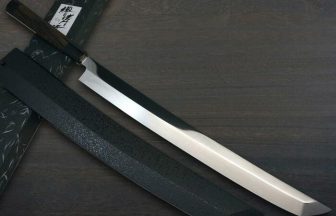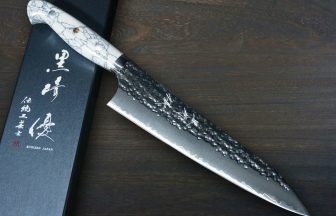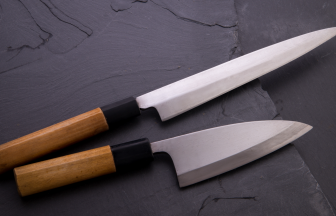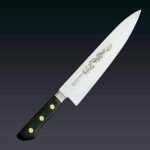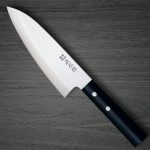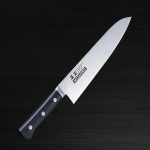img by : hocho-knife.com
Whether it is a fine plate of Sashimi that you’re ordering, or a dish full of Uramaki and Nigiri pieces, Japanese food never disappoint gourmets and food lovers with delicacy that combines along with exotic blends of uniqueness resulting from fine selections of flavorful ingredients. Japanese food lovers not only appreciate the original flavors and traditional tastes coming from the premium quality, fresh-from-sea ingredients like Salmon, Saba, or sprinkles of vibrant orange-colored beads of Caviar, but also the Japanese food aesthetics, the mastery of knife-using skills, and the delicate food-preparation processes.
Utilizing Japanese cutlery, specifically Japanese knives, can be extremely challenging for first-time users and beginners as sushi and sashimi dishes require numerous skills and techniques that revolve around cutting, slicing, chopping, filleting, and peeling. Choosing a perfect blade for various uses will require knife users to first determine the differences in blade bodies, varying handle materials, and knife edge types. There are a plenty of knife types, including: Santoku, Yanagiba, Gyuto, Sujihiki, Bunka, Nakiri, and other specialized ones. Here, Japanese food chefs and gourmets will have to choose among the available knife types for one which matches best with what they will be cooking.
Japanese knives own typical, yet unique blade characteristics. The perfect blade balance and edge retention marks as among the best features Japanese knives own and are extremely helpful when it comes to the crafting of difficult, challenging, and complex dishes that require a high lot of concentration and dedication. To successfully hand-craft Japanese delicacies, a good cutlery with premium quality will not only aid users in techniques that require complex motions and hand movements, supreme quality of Japanese blades will provide users with edge retention, rust/stain resistance, high blade performance, and efficiency.
There are various Japanese knife brands that advertise and showcase themselves as being among the top-tier, top-notch brands that would win the hearts of Japanese food chefs and culinary experts. However, only culinary experts and professionals know which brands they would have their trusts in. High-end, top Japanese knife brands like Sakai Takayuki and Yu Kurosaki are both popular and famous among knife users worldwide for hard steels and premium-quality blade bodies. Between the two, Sakai Takayuki is currently topping the charts with its unique and original knife series.
Sakai Takayuki 33-Layer VG10 Damascus Hammered Japanese Chef’s Santoku knife (180mm) is among Sakai Takayuki’s best-selling Damascus steel Santoku knife, as the extremely hard knife edge and balanced blade body push forward possible enhancements in swift motions when gripping the knife. Its hardness of HRC equals to 60, which provides users with a guarantee that the knife will be durable and extremely suitable for cutting, slicing, and chopping of hard or dense-textured ingredients. Its handle is crafted beautifully and uniquely out of Mahogany wood, which also provides users with a water proof feature and grained textures worth having in collection.
Sakai Takayuki 45-Layer Damascus Hammered WA Japanese Chef’s Santoku knife (180mm) is also one of Sakai Takayuki’s excellent Santoku knife models crafted out of Damascus stainless steel. The knife’s core is made out of AUS10 Alloy, while the handle is made out of half-rounded Octagonal Walnut wood usually crafted to make high-end Japanese knives and cutlery for professional use. The knife’s ferrule is crafted out of Pakkawood or also known as compressed wood fiber, which is more durable and less prone to cracks compared to other common materials, for instance, horn.
As Sakai Takayuki strives to forge premium quality blades for the crafting of Japanese delicacies, each knife type owns original features and performs differently according to its type. Therefore, it is best to choose among the high-quality models recommended by experts and select the right kind for specific purposes.

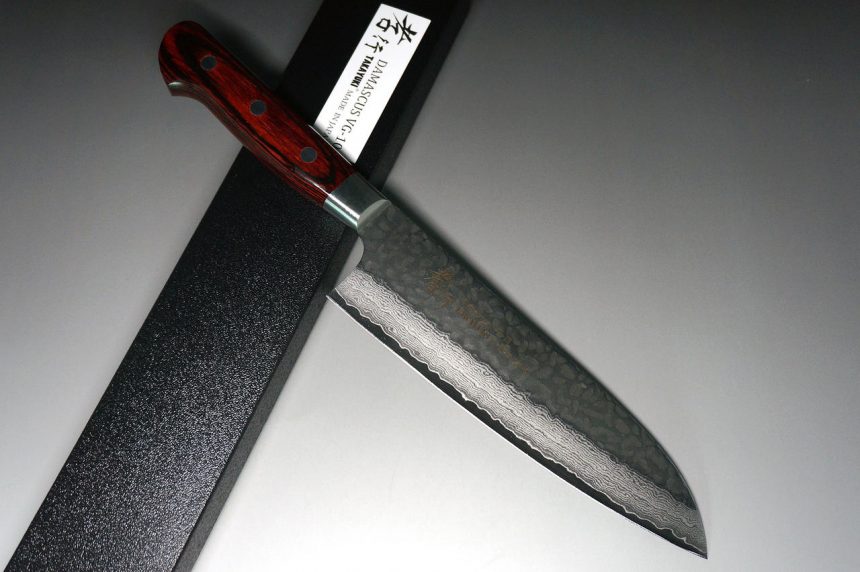
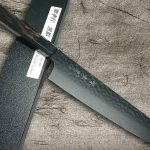

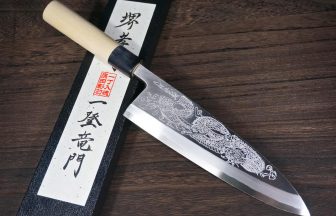
![Sakai Takayuki Non-Stick Coating VG10 Hammered WA KUROKAGE Japanese Chef's Kengata-Gyuto Knife 190mm with Japanese Lacquered Oak Handle [KOUSEKI]](https://chefshuffle.com/wp-content/uploads/2022/11/sakai-takayuki-sakai-takayuki-non-stick-coating-vg10-hammered-wa-kurokage-japanese-chefs-kengata-gyuto-knife-190mm-with-wenge-handle__79954-336x216.jpg)
